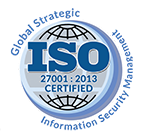Outsourcing Property Management services give businesses the benefit of “risk transfer”. Thus, the Business Process Outsourcing (BPO) provider becomes responsible for system failures and costs that come with it. But, that’s not always the case.
So, should outsourcing be considered risk sharing? In this article, we’re going through the four main pillars of “risk transfer” and how businesses can take advantage of it.

Before getting into detail, let’s first describe what risk transfer is in the context of outsourcing.
Risk Transfer is the contractual transfer of a pure risk from one party to another. This is a part of a risk management and control technique.
Sunil Bakshi, Managing Director and consultant trainer in IT governance and information security, says the four pillars of risk are:
- Risk Avoidance
- Risk Acceptance
- Risk Mitigation
- Risk Transfer
Risk Management Options In Outsourcing – The Four Pillars Of Risk
Risk Avoidance
When companies transfer risk to an outsourcing partner, they share it. Example: financial loss. As such, a minor premium might transfer a susceptible company’s financial loss risk to an insurer.
Meanwhile, a group’s premiums and losses are allocated using a predetermined formula, which is called risk sharing or risk distribution. Appropriately, transferring risks and sharing risks are comparable or similar responses to risk.
Among the best practices to avoid risk is to ensure that you and the third-party vendor understand each other clearly. So, clients and vendors need to clearly define what the requirements and limitations are.
A simple way to achieve this is by sending requirements documents to vendors and giving them time to review them in detail. Once done, vendors should already have a list of questions, concerns, or recommendations.
Afterward, the client’s company should invite vendor managers and client team members responsible for contributing to different areas of the requirements documents.
Risk Acceptance
Accepting risk is when a business or individual decides a risk’s potential loss isn’t high enough to spend money avoiding it. An example of this in outsourcing comes in the form of “Loss of Control“.
Outsourced processes or services may cause managers to lose control of their process technology and quality standards. Unfortunately, the consequences can be dire.
That’s because when a company outsources tasks previously undertaken by its own employees, quality, production schedules, and contractual disputes can occur. Managers often accept this risk when outsourcing.
Balancing out quality for cost-effectiveness then becomes a manager’s primary task when considering outsourcing. Luckily, with advancements in technology – the gap between cost-effectivity and quality of work has shrunk exponentially.
Now, BPO companies handle training and quality control of a client’s outsourced workforce. That way, risk acceptance becomes minimal as loss of quality is mitigated.
Risk Mitigation
Business Managers have considered outsourcing as a risk transfer/risk sharing response since the popularization of outsourcing practices. As such, organizations shifted risks too difficult to manage internally due to cost and resources.
Moreover, the outsourcing partner becomes responsible for sourcing talent that meets a business’s skill requirements. But, although this argument is valid, outsourcing should not be considered a risk-sharing option for the entire business process and core activities.
That said, businesses, especially those only starting to outsource, are advised to outsource repetitive, non-dollar-productive tasks. These include data entry and other back office services.
To learn more about these tasks, check out the article below:
What Can You Outsource To The Philippines? – Top Outsourced Services
Risk Transfer
Think of outsourcing as a contractual transfer of risk from one party to another. “Shall assume…” and other indemnification clauses are common in contracts.
Your company, for example, makes extensive use of software tools in its day-to-day operations. There are two types of software: on-premises (also known as “on-premises”) and cloud-based (also known as “on-premises”).
The outsourcing company’s risk management strategies are critical to your organization’s success. Norman Marks, a leading name in risk management says management will be unaware of how the third party controls risk. Even if the merchant was doing everything right, you won’t be able to claim perfect innocence when a major issue arrives.
For this reason, businesses need to ensure that the vendor they chose to outsource services to is transparent on how they handle risk management within their own company. The third-risk party’s management practices must be evaluated by organizations – a good example would be ISO.
Conclusion
Businesses, especially property management, shouldn’t look at outsourcing merely as a way to save on operational costs. There are clear risks that need consideration.
Additionally, both vendors and clients should clearly discuss how to approach those risks in order to gain a mutually beneficial relationship. Clearly, outsourcing takes work. But, with the right partner, it becomes a valuable asset to any business in the long term.
If you’re ready to start your outsourcing journey, Global Strategic can help with your business needs and give you the Strategic Advantage needed to edge out the competition. Talk to us today and learn more about how offshore outsourcing to the Philippines can help your business and future business growth.

